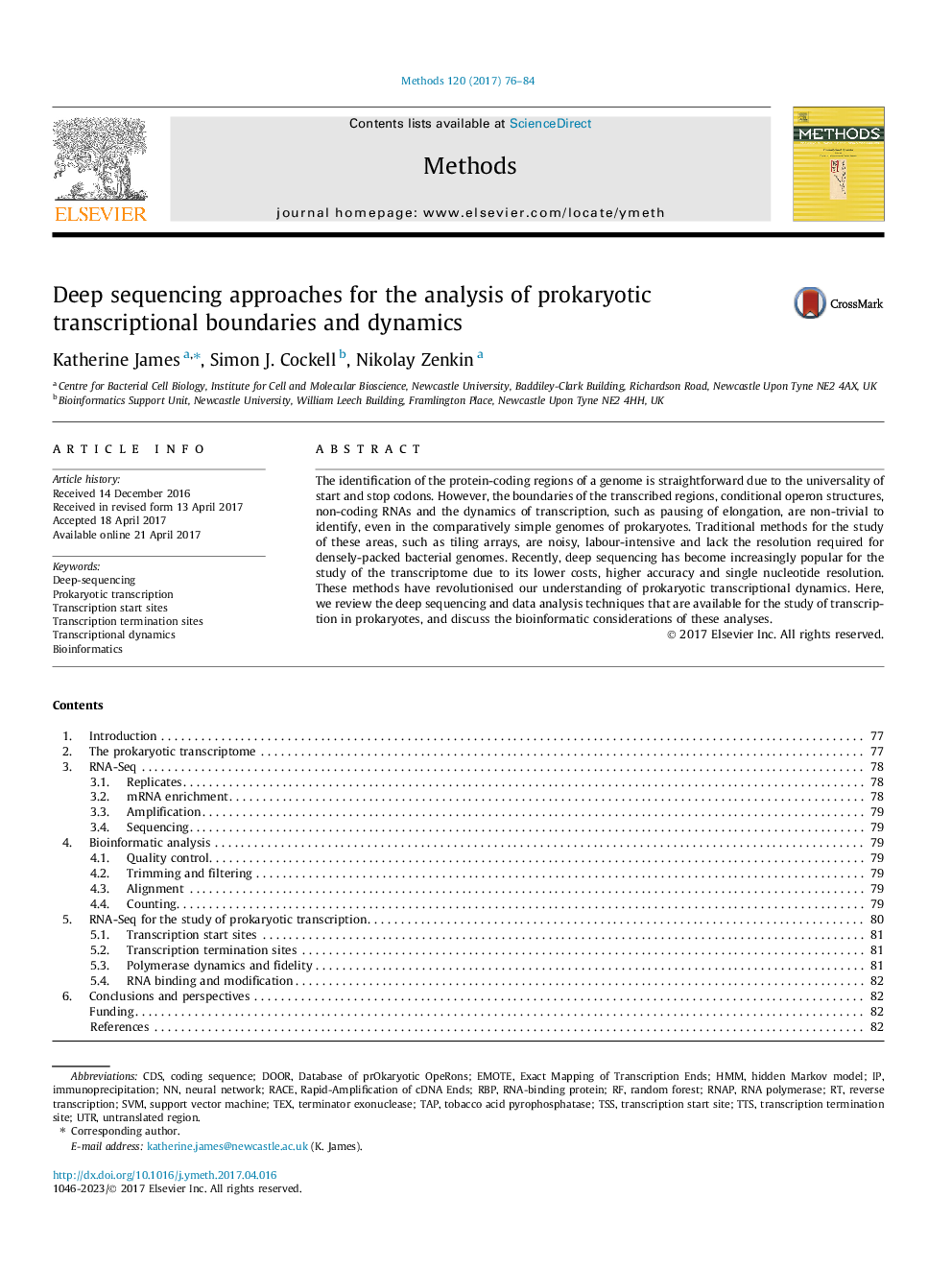| کد مقاله | کد نشریه | سال انتشار | مقاله انگلیسی | نسخه تمام متن |
|---|---|---|---|---|
| 5513640 | 1541207 | 2017 | 9 صفحه PDF | دانلود رایگان |
- Bacterial genomes are far more complex and dynamic than previously thought.
- Sequencing has quickly taken over from array-based methods for the study of transcriptomics.
- Prokaryote-specific deep sequencing methods have been developed to investigate transcription in vivo.
- There are many variations and options to these sequencing protocols and analyses.
- These analyses require different processing than RNA-seq gene expression studies.
The identification of the protein-coding regions of a genome is straightforward due to the universality of start and stop codons. However, the boundaries of the transcribed regions, conditional operon structures, non-coding RNAs and the dynamics of transcription, such as pausing of elongation, are non-trivial to identify, even in the comparatively simple genomes of prokaryotes. Traditional methods for the study of these areas, such as tiling arrays, are noisy, labour-intensive and lack the resolution required for densely-packed bacterial genomes. Recently, deep sequencing has become increasingly popular for the study of the transcriptome due to its lower costs, higher accuracy and single nucleotide resolution. These methods have revolutionised our understanding of prokaryotic transcriptional dynamics. Here, we review the deep sequencing and data analysis techniques that are available for the study of transcription in prokaryotes, and discuss the bioinformatic considerations of these analyses.
Journal: Methods - Volume 120, 1 May 2017, Pages 76-84
